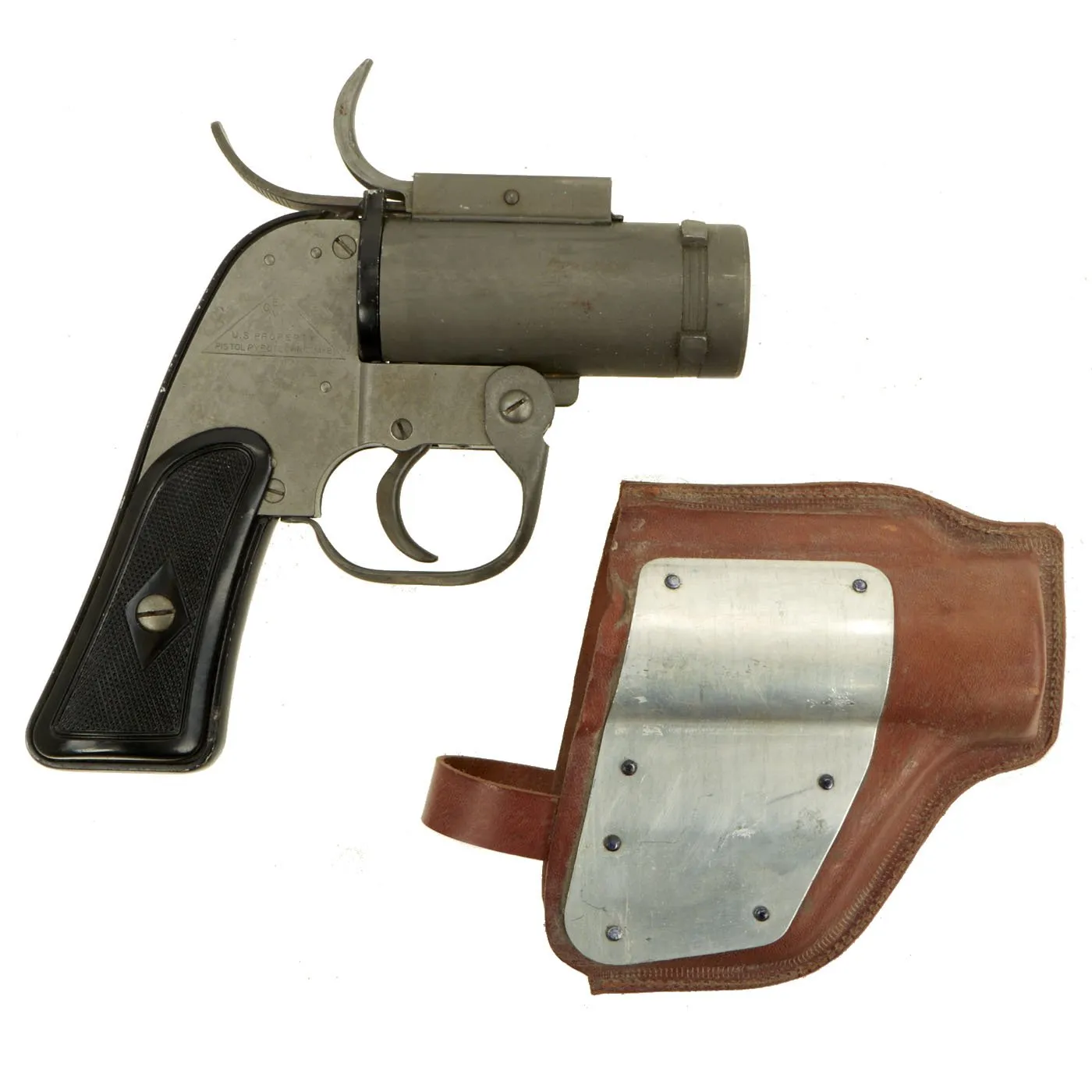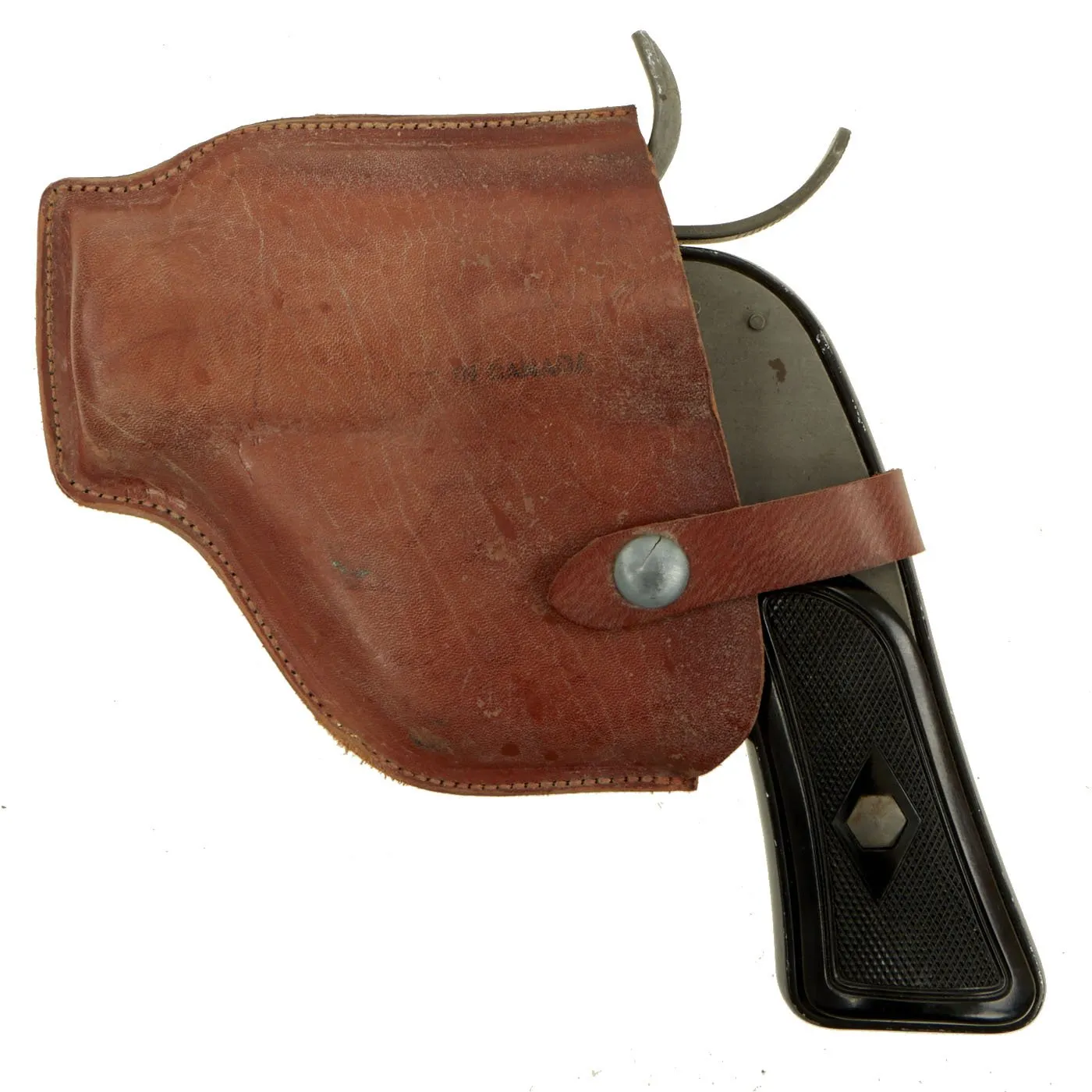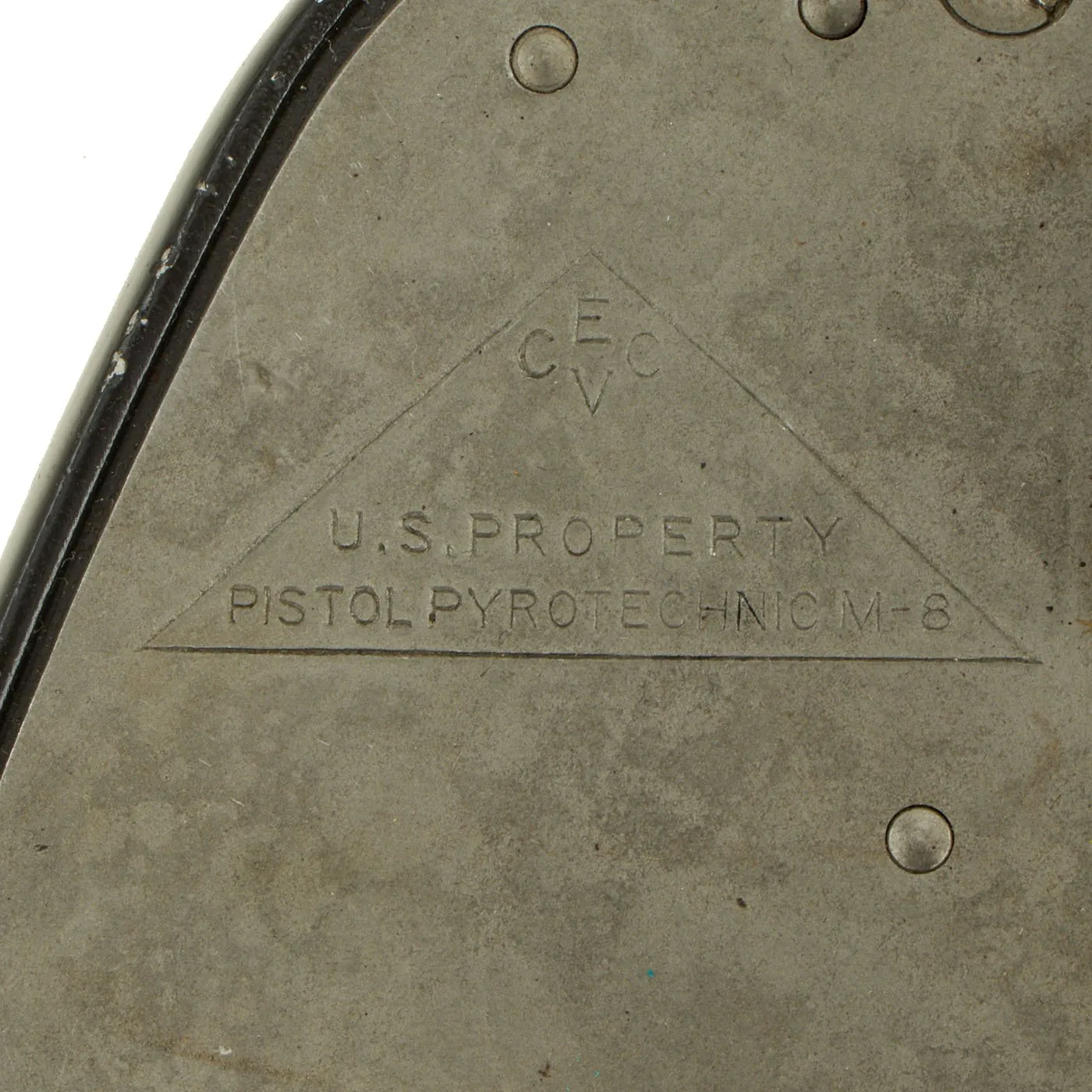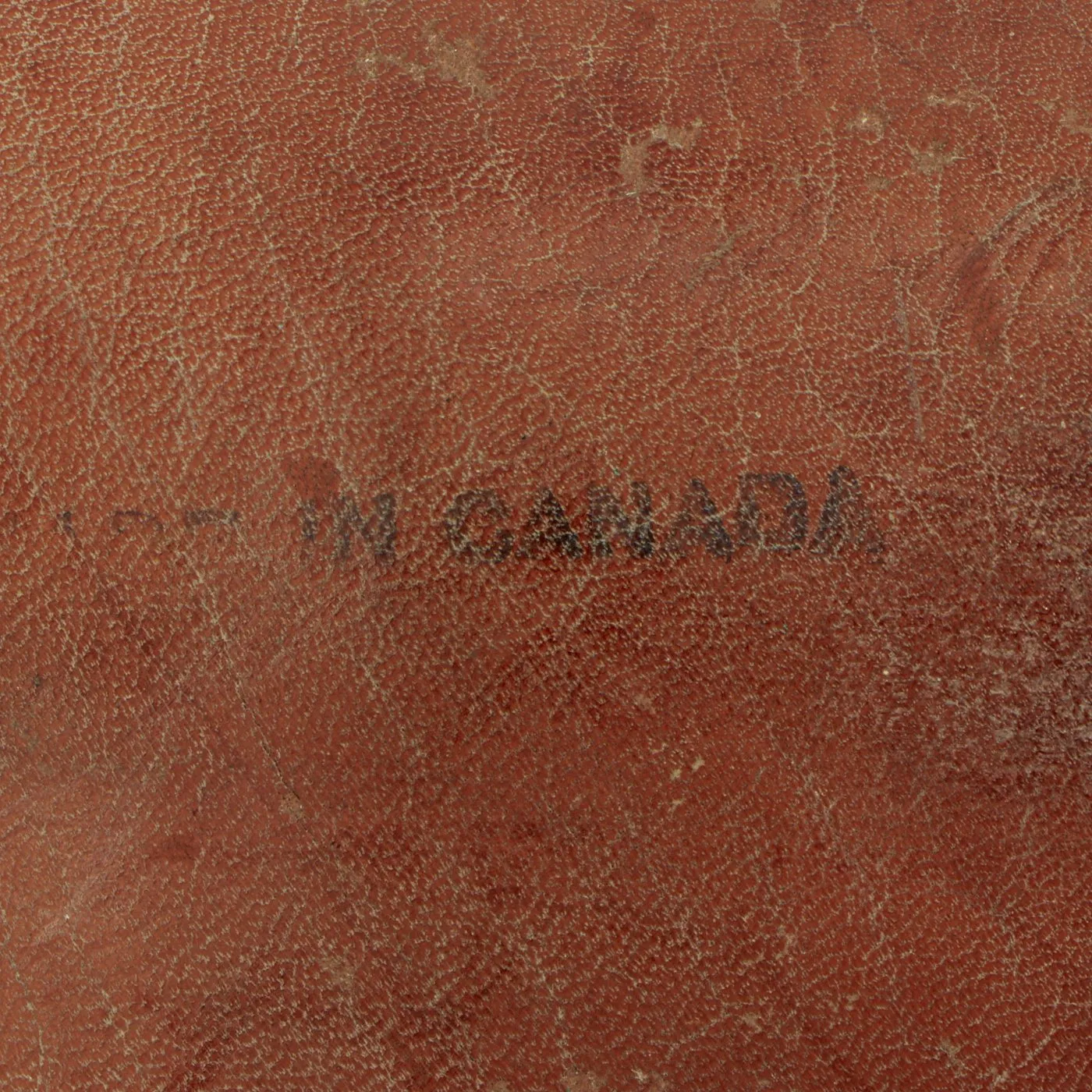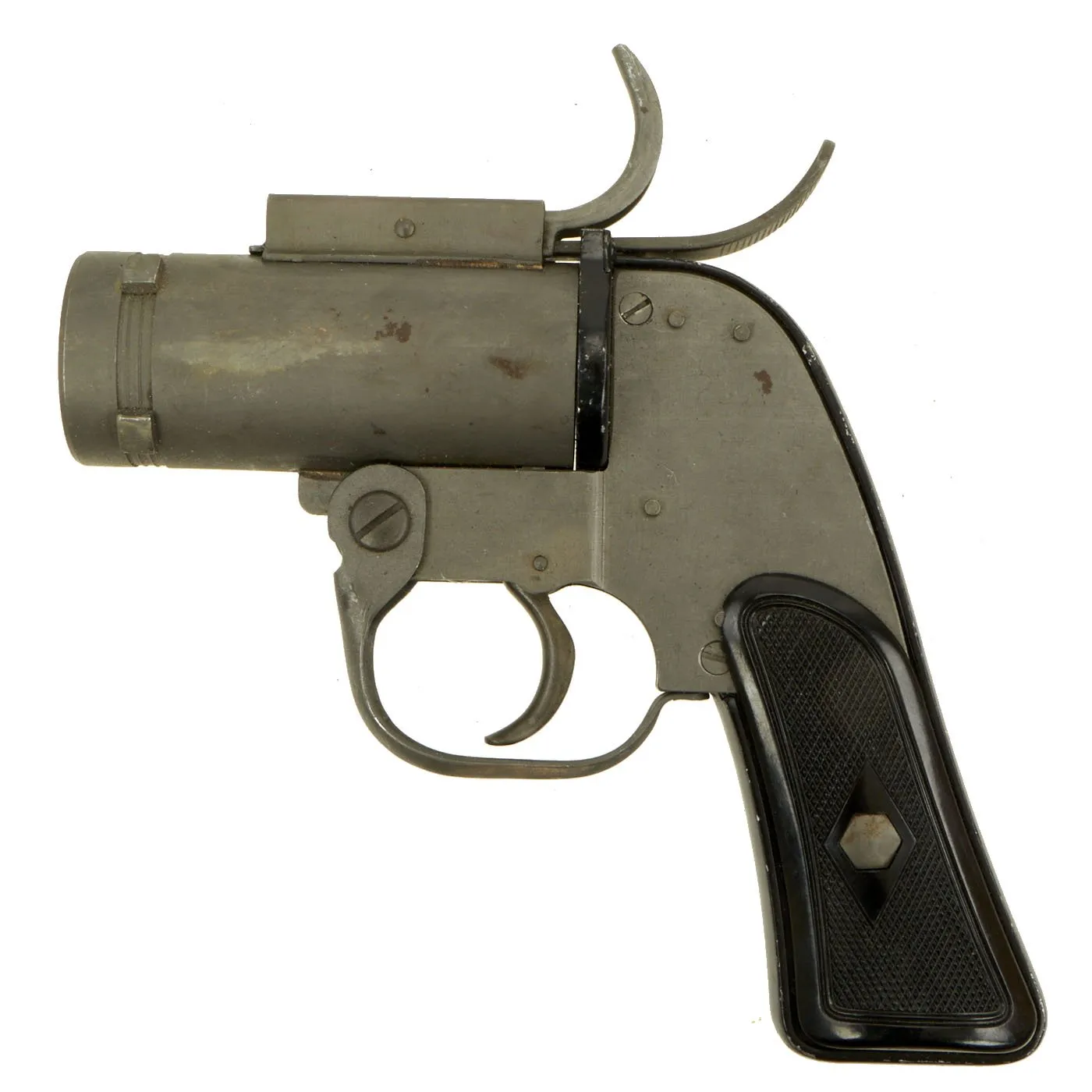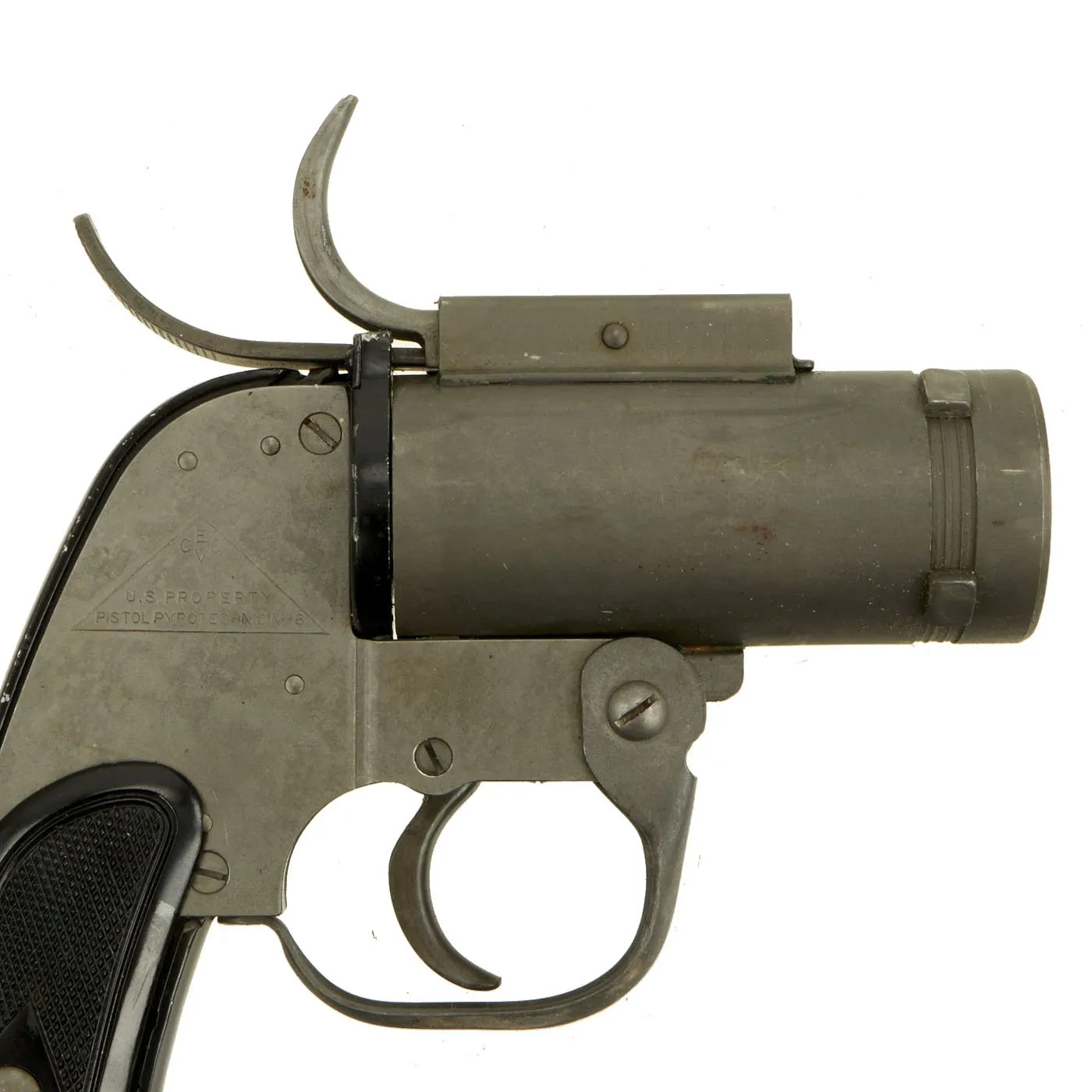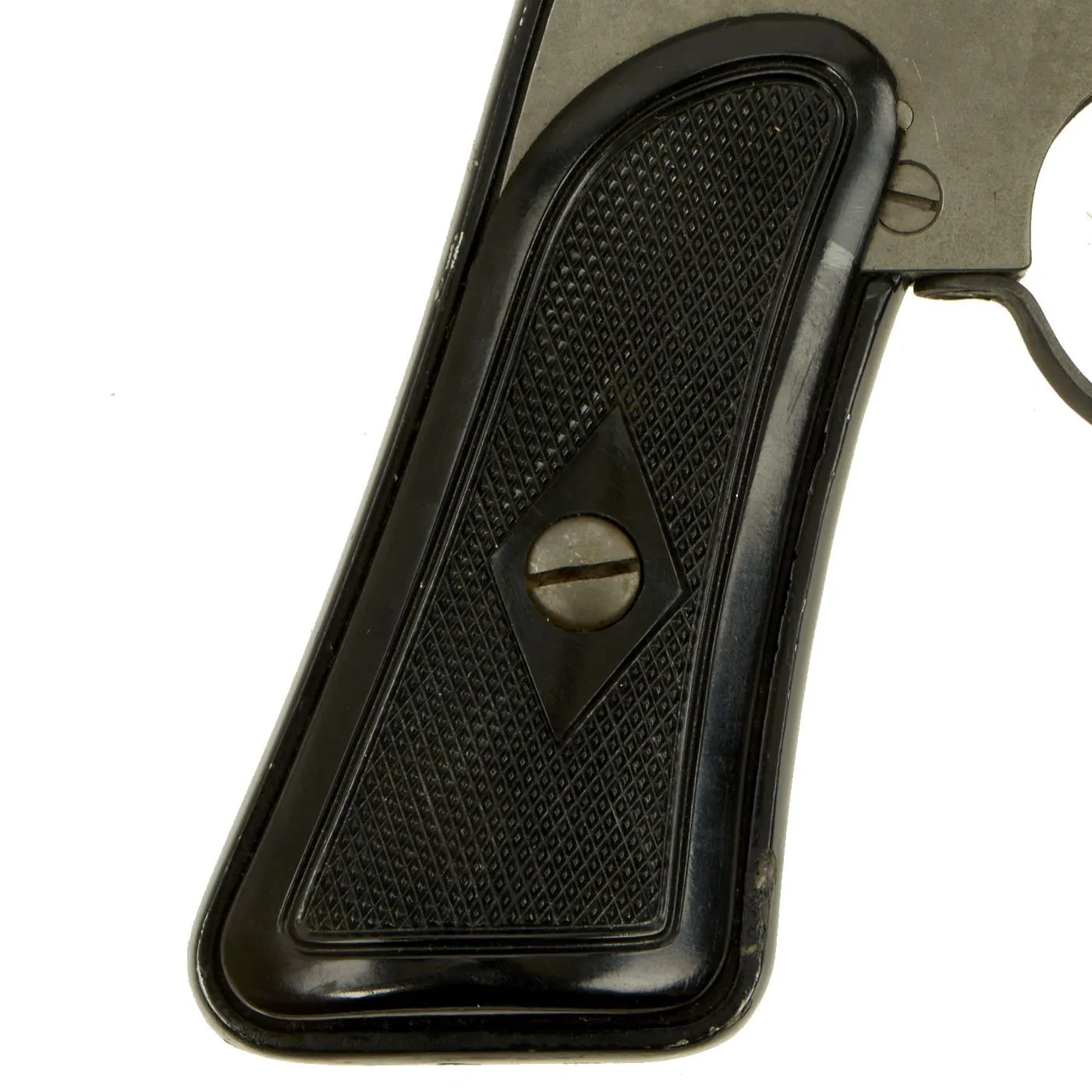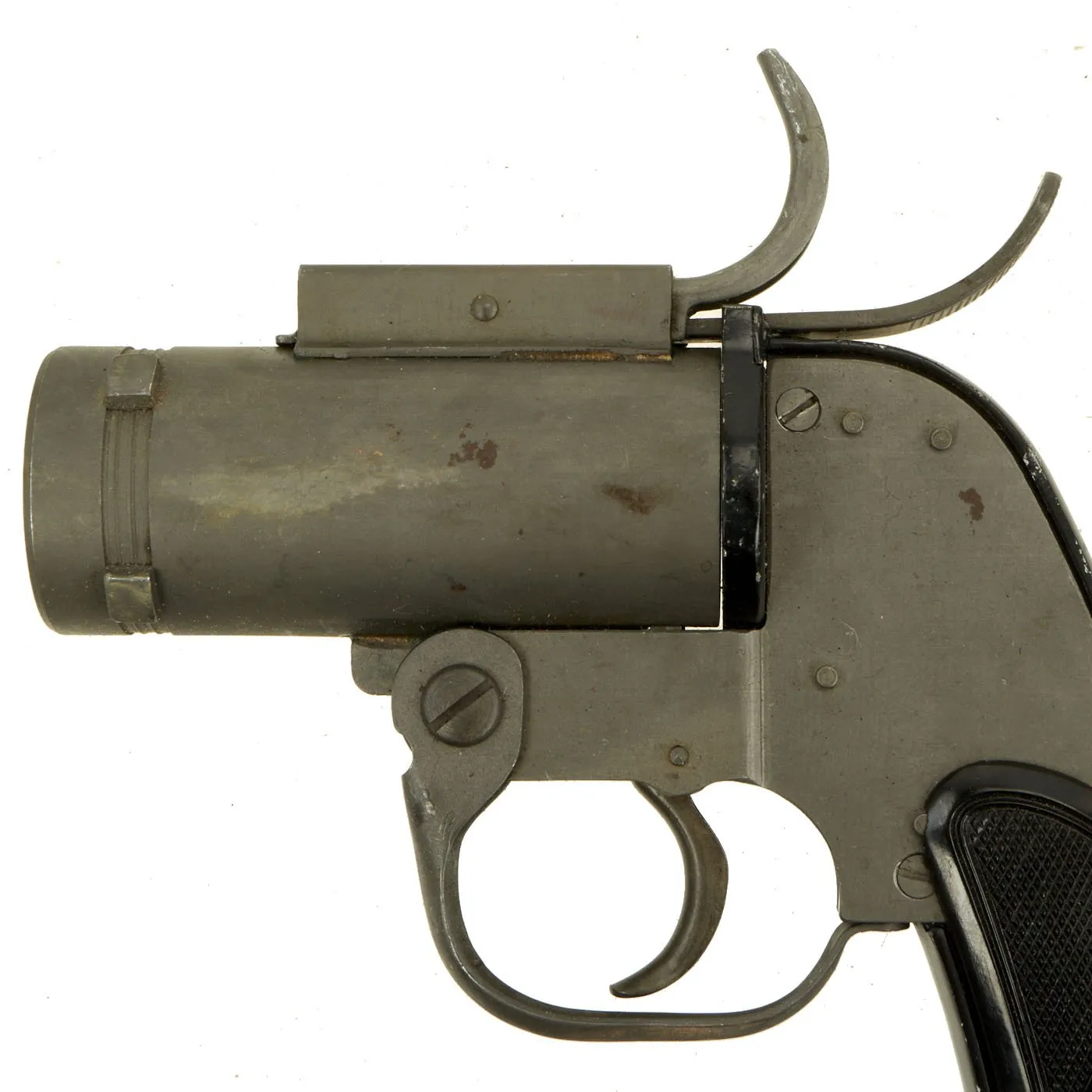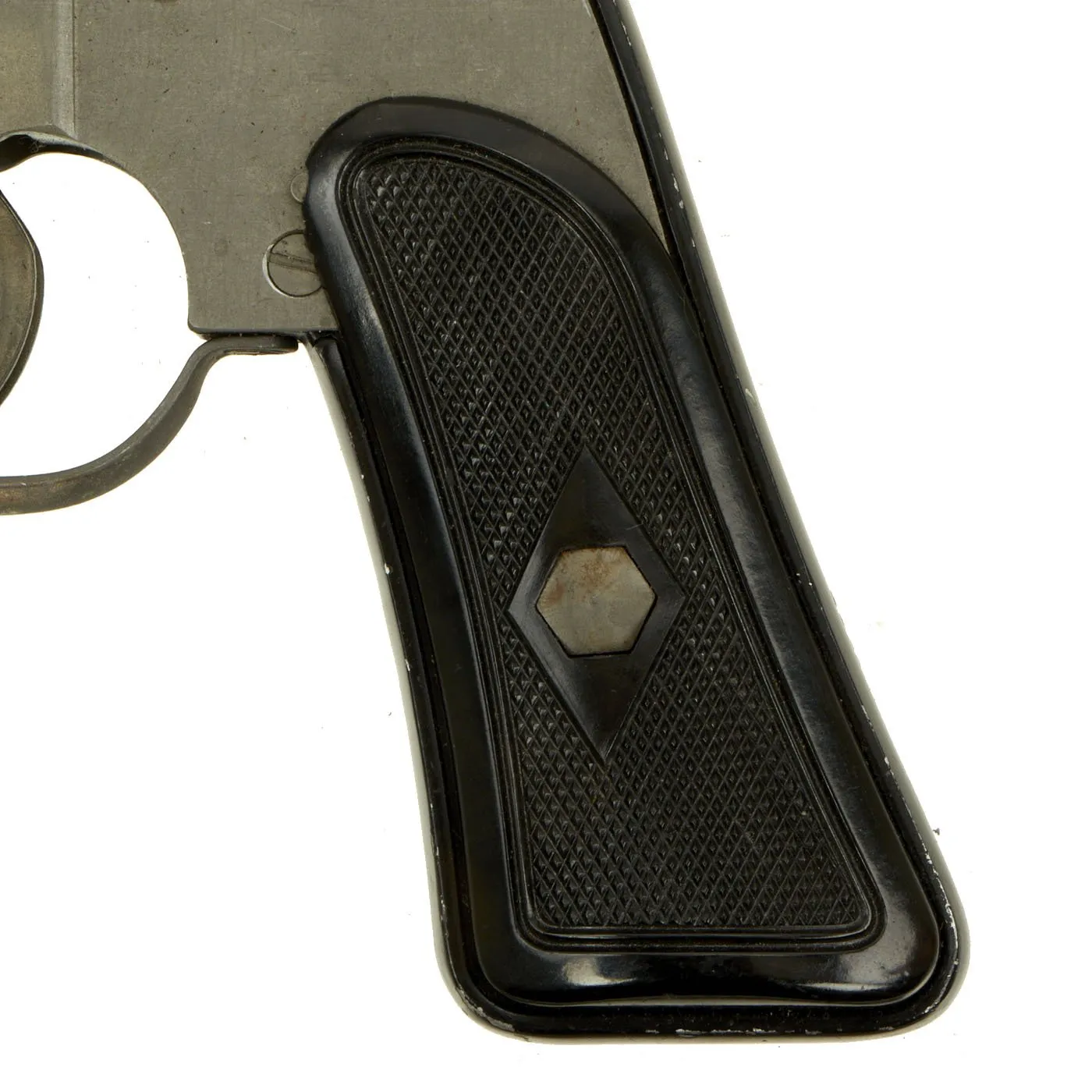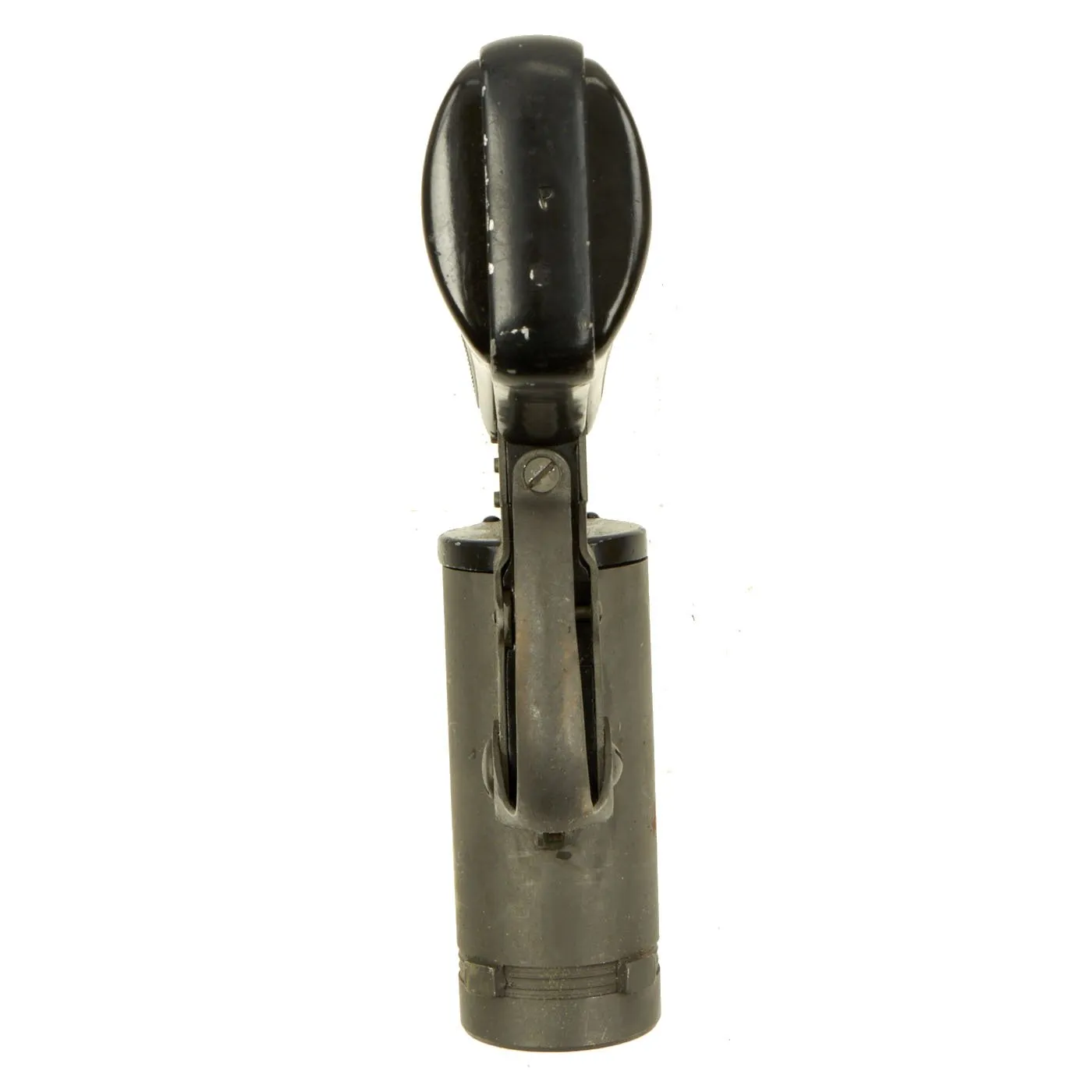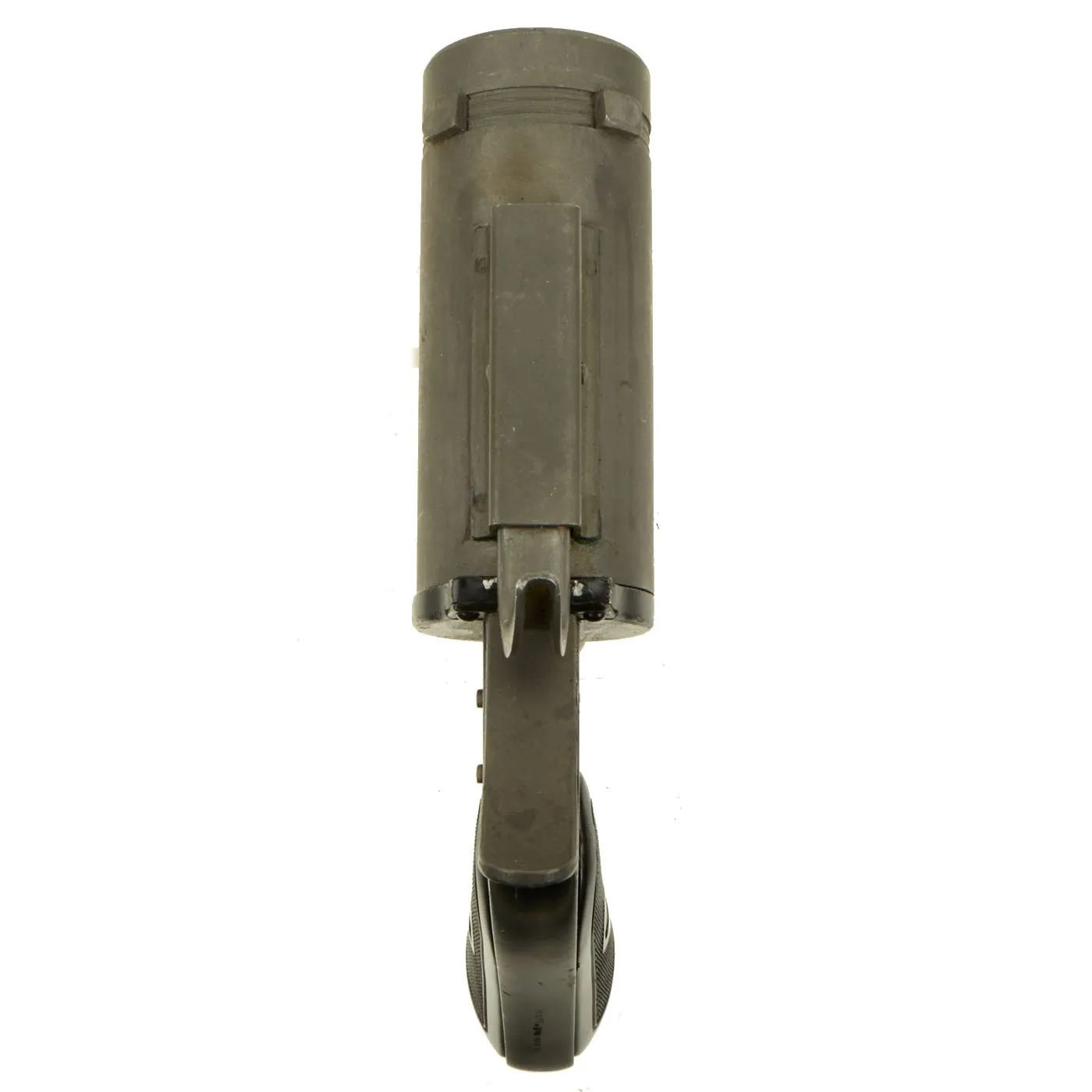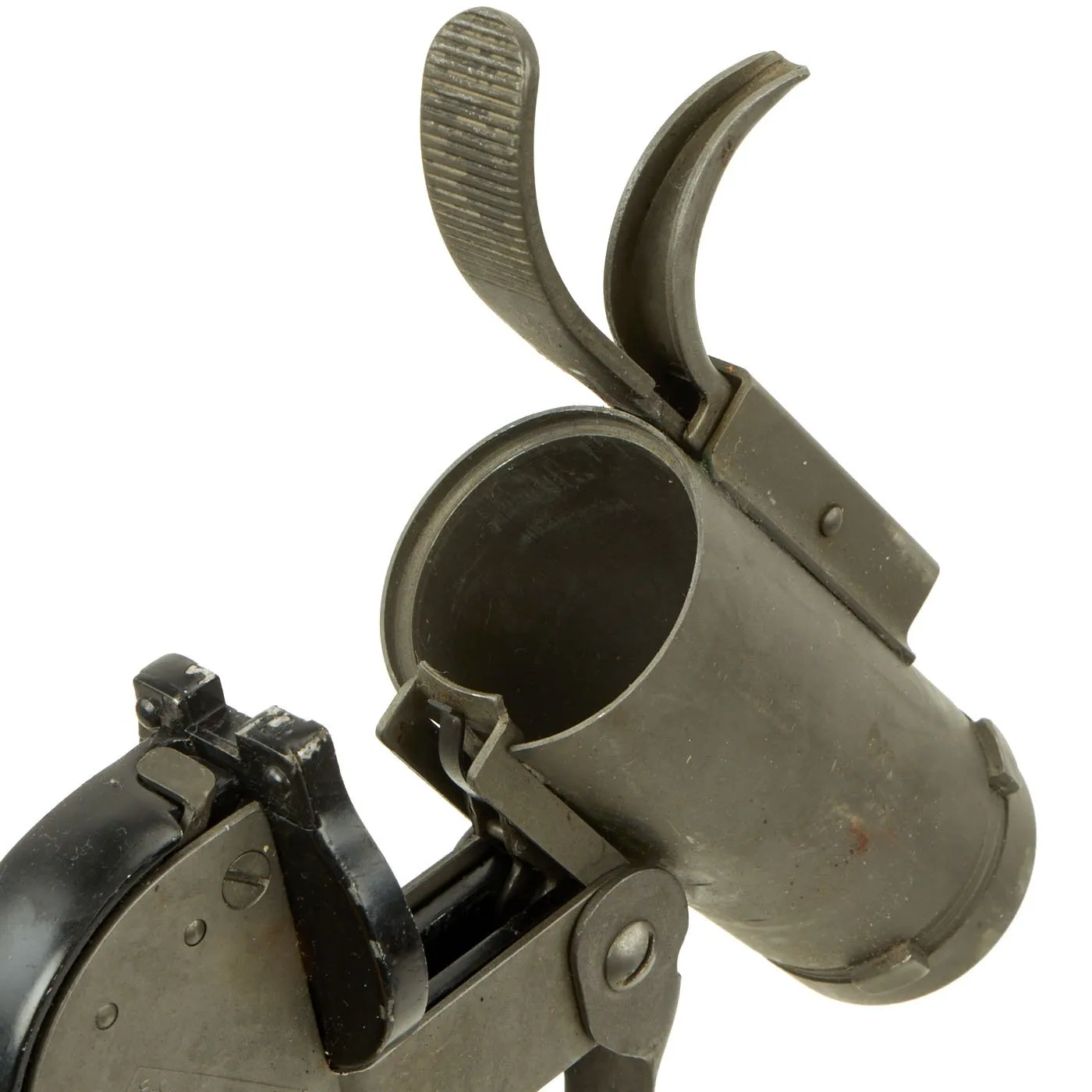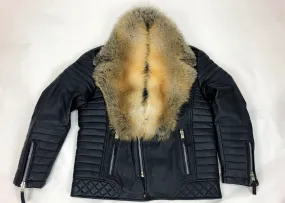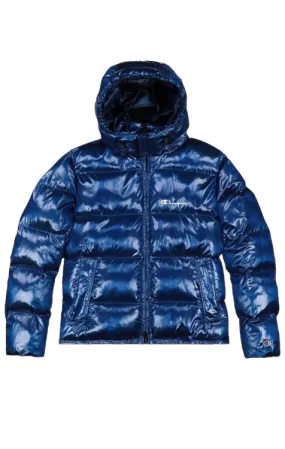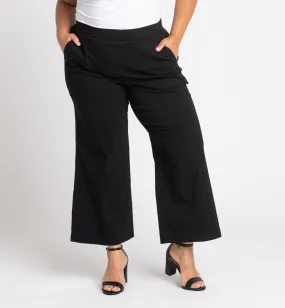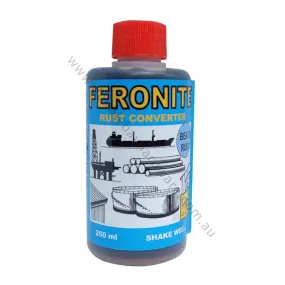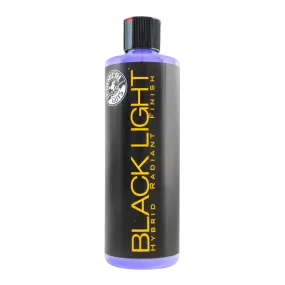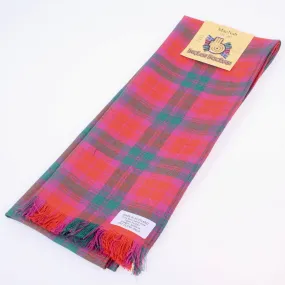Original Item: Only One Available. This is a very nice condition M8 37mm big-bore signal pistol, as used during WWII. The barrel has studs for attachment to a flare port in the fuselage of large aircraft such as bombers. The right side of the frame is marked inside a triangle:
E
C V C
1942
U.S. PROPERTY
PISTOL PYROTECHNIC M-8
The abbreviation at the top indicates manufacture by Eureka Vacuum Cleaner Co., one of several contractors employed to make these pistols. This example is offered in very good fully functional condition, and is marked on the spine of the grip with SERIAL No. E-167075. A good deal of the original finish is present, even the paint on the aluminum portions. As far as we can tell, no parts are missing, and the firing pin is present and functional. It is marked with the U.S. Ordnance "Crossed Cannons" proof and "P" on the bottom of the grip.
This is a flare pistol, mainly used during and after WW2 in aircraft. Although intended to be mounted in the M1 aircraft mount, this flare pistol can be used as a conventional flare pistol. The barrel hinges down to allow removing a spent cartridge or loading a cartridge from the breech end of the barrel. But a grooved type cartridge can be loaded from the muzzle end of the barrel.
Designed during WW2 to be manufactured by the Eureka Vacuum Cleaner Co. and uses metal stamping instead of machined parts. The frame is cast aluminum.
The two levers on the top of the barrel give it a very unique look. The top hook shaped lever when pulled back allows the pistol to be installed or removed from the M1 mount in an aircraft.
The leather holster is beautiful but does show signs of being stored for a long period of time. The leather itself is still soft, not cracked or damaged, the aluminum plate on the back is still present, undamaged and has all 7 original rivets. On the face of the holster MADE IN CANADA can still be seen clearly.
This is a welcomed addition to any aspect of your WW2 collection, because just like the Marines, these flare guns operated on air, land and sea!
A flare gun, also known as a Very pistol or signal pistol, is a large-bore handgun that discharges flares. The flare gun is typically used to produce a distress signal. A flare gun can be used as a deadly weapon, but that is not its intended function.
The most common type of flare gun is a Very (sometimes spelled Verey), which was named after Edward Wilson Very (1847–1910), an American naval officer who developed and popularized a single-shot breech-loading snub-nosed pistol that fired flares (Very lights). They have a single action trigger mechanism, hammer action, and a center fire pin. Modern varieties are frequently made out of durable plastic of a bright color that makes them more conspicuous and easier to retrieve in an emergency and assists in distinguishing them from conventional firearms.
The older type of Very pistol, typical of the type used in the Second World War, are of one inch bore (26.5mm), now known as "Calibre 4" for signal pistols. These are still available and more recent longer barrel models can also fire parachute flares. Many newer models fire smaller 12-gauge flares. In countries where possession of firearms is strictly controlled, such as the United Kingdom, the use of Very pistols as emergency equipment on boats is less common than, for example, the United States. In such locations, distress flares are more commonly fired from single-shot tube devices which are then disposed of after use. Flare guns may be used whenever someone needs to send a distress signal. The flares must be shot directly above, making the signal visible for a longer period of time and revealing the position of whoever is in need of assistance. There are four distinct flare calibers: 12-gauge (18.53mm), 25mm, 26.5mm, and 37mm – the first three being the most popular for boaters.
While not intended as a weapon, flare guns have been used as such in some situations. Towards the end of World War I during the Final Offensive of the Sinai and Palestine Campaign, on 19 October 1918 a German aircraft was destroyed on the ground by firing a Very light into the aircraft. The D.F.W. two-seater was first seen in the air; the first German aircraft since aerial fighting over Deraa on 16 and 17 September just prior to the beginning of the Battle of Sharon. The two-seater was forced to land and was destroyed after the German pilot and observer had moved to safety.
In 1942, a German pilot mistakenly landed at the Pembrey Airfield in Wales. The duty pilot, Sgt. Jeffreys did not have a conventional weapon, so he grabbed a Very pistol and used it to capture the German pilot, Oberleutnant Armin Faber.
In World War II, Germany manufactured grenades designed to be fired from adapted flare guns known as the Kampfpistole, or Sturmpistole in its final form. The weapon was designed to function as an anti-tank weapon but failed to perform to expectations due to the minuscule amount of TNT carried in the hollow charge projectiles.
In the latter stages of the Korean War, on November 2 of 1951, Lieutenant Edward Mastronardi and his 28-man platoon of the Royal Canadian Regiment were occupying a spur halfway between UN and Chinese lines known as the Song-gok. During the night, Chinese infantry launched several attacks against the spur. During the second attack, Mastronardi personally shot two Chinese soldiers with his Inglis Hi-Power pistol, and killed a third with his flare gun.




